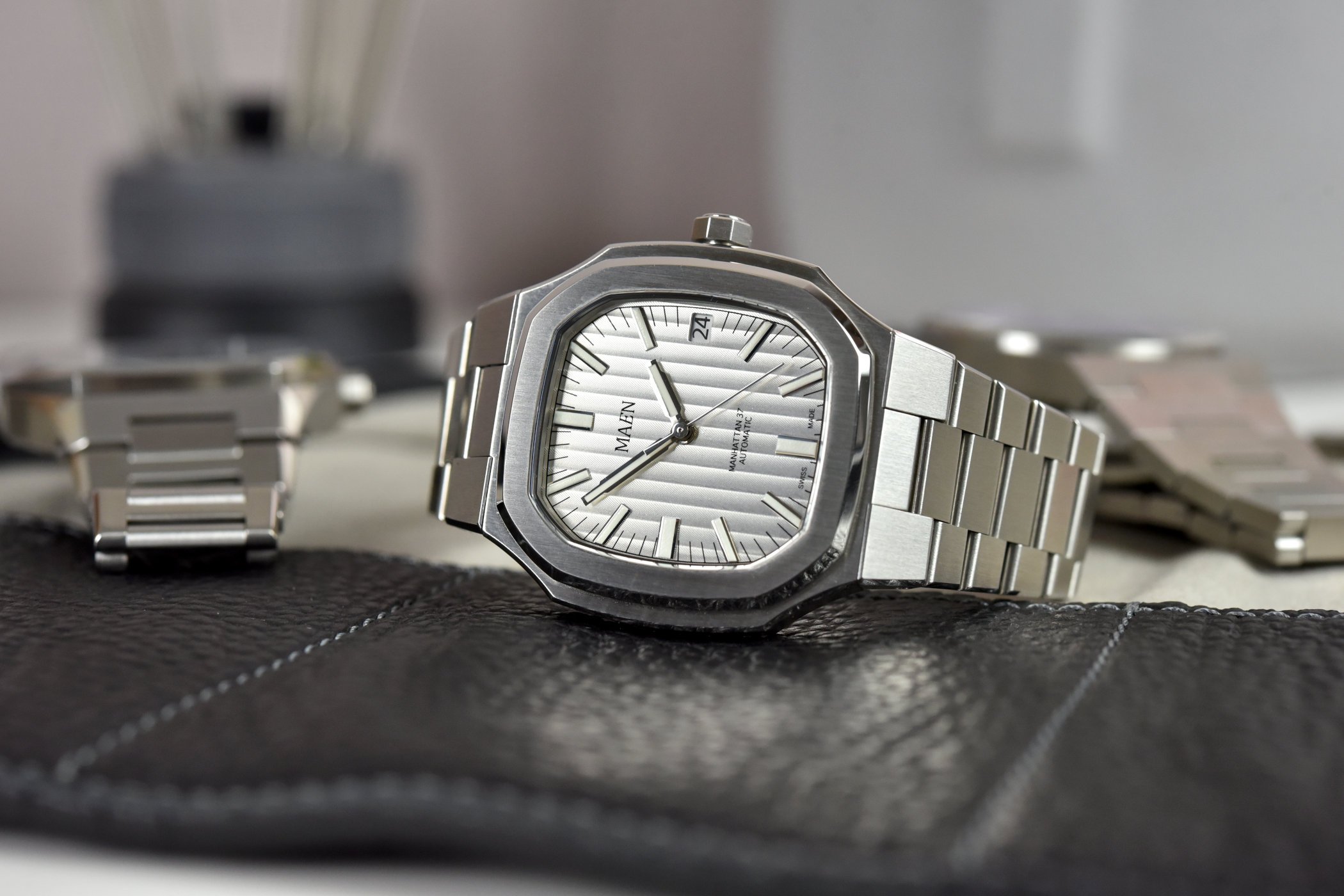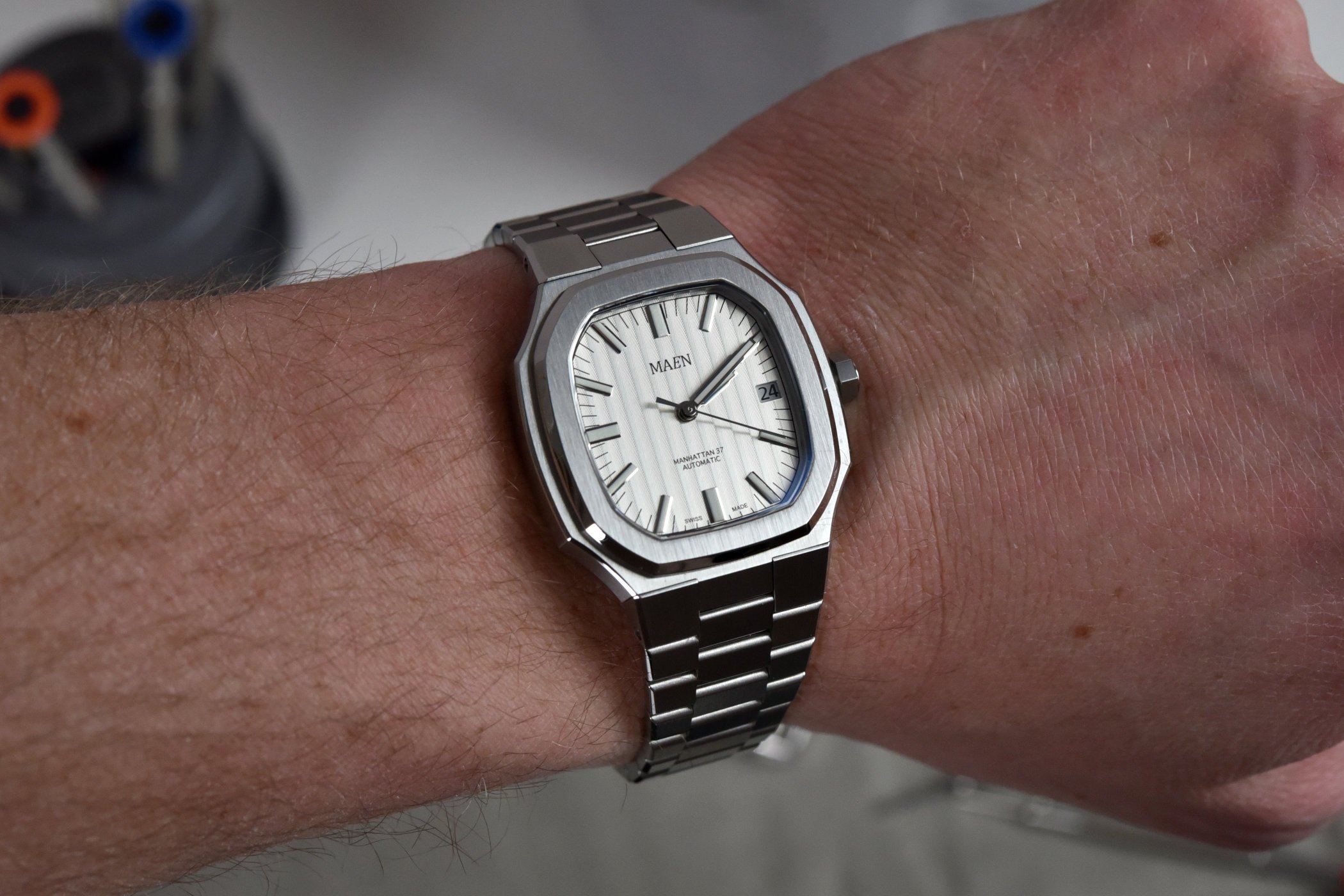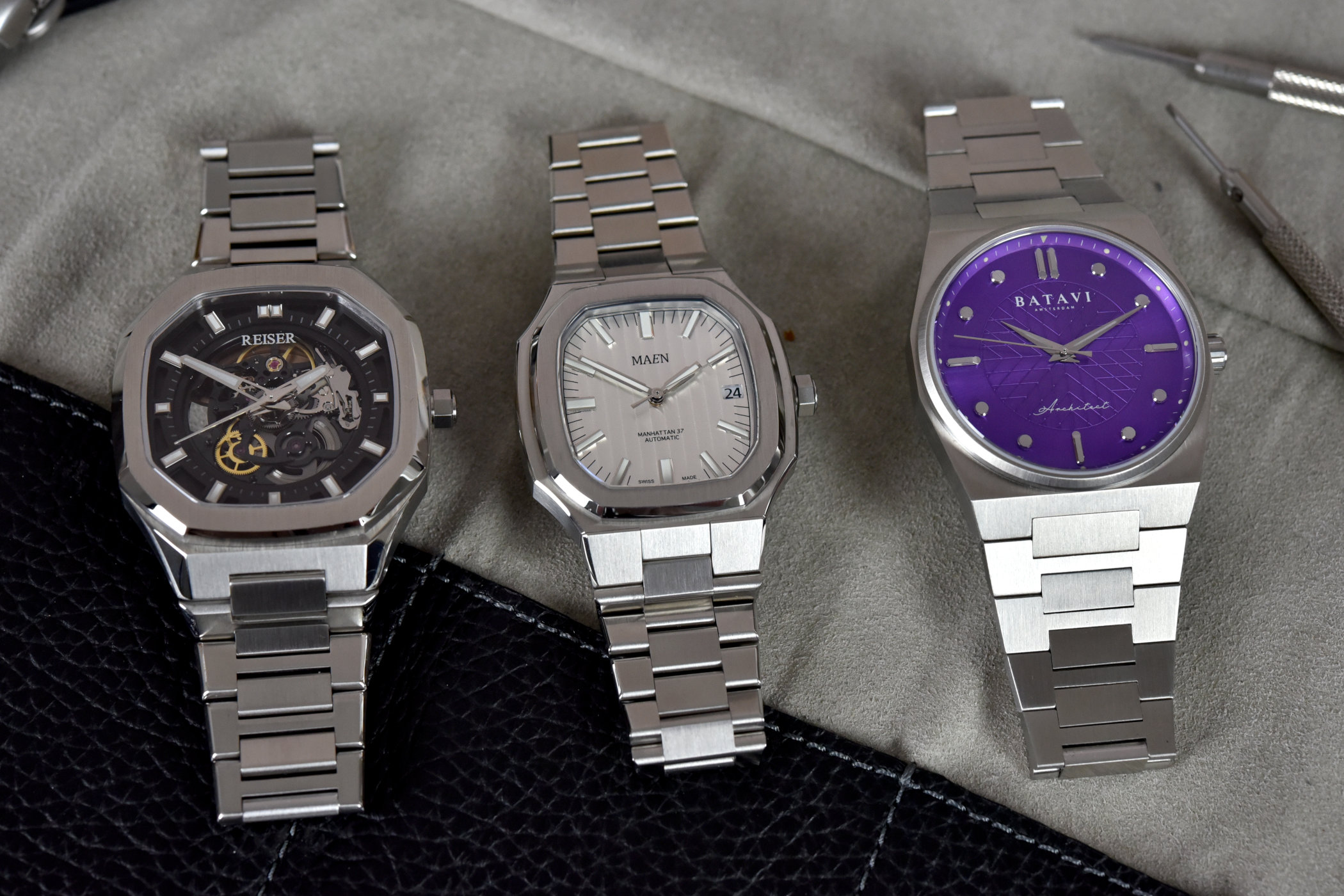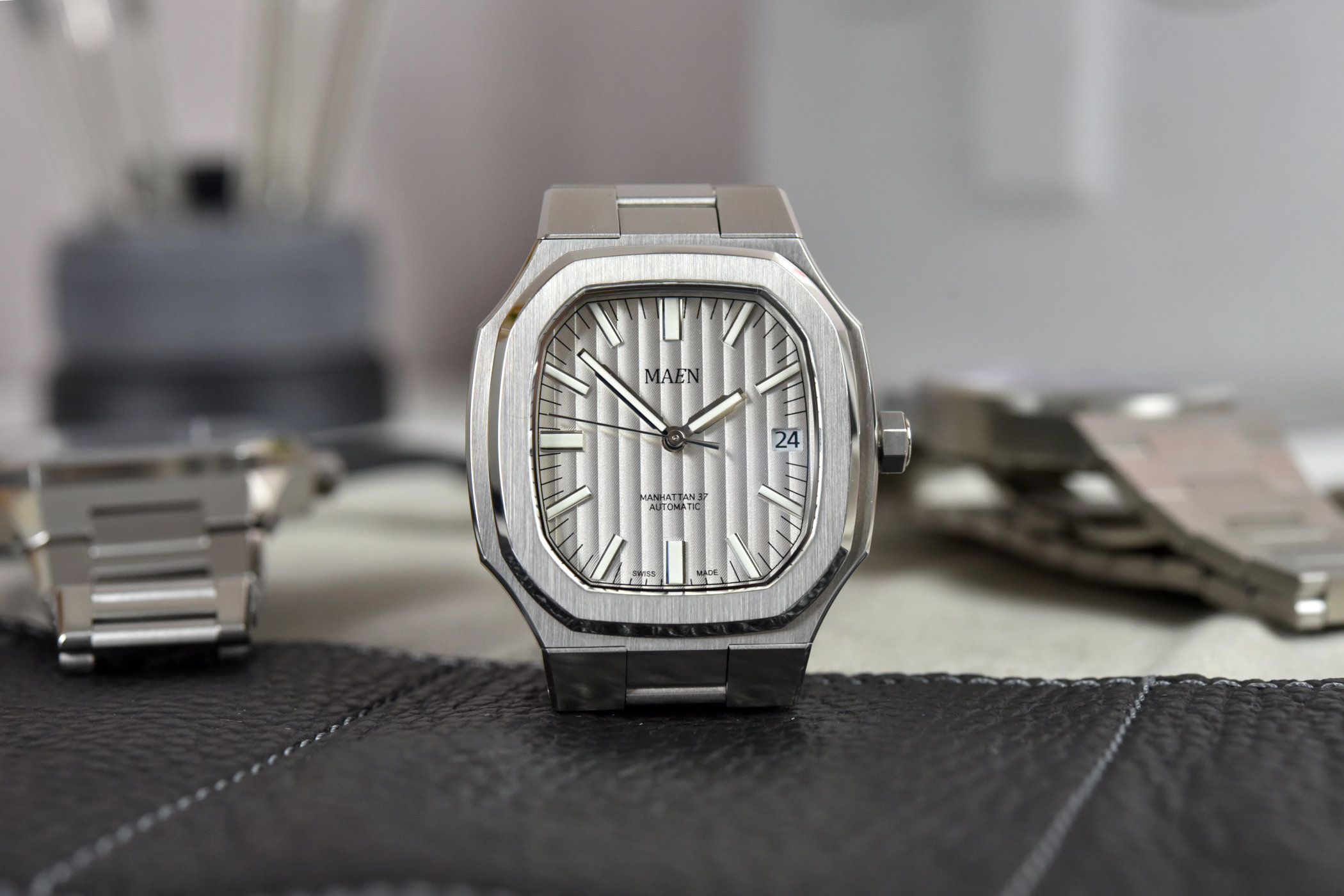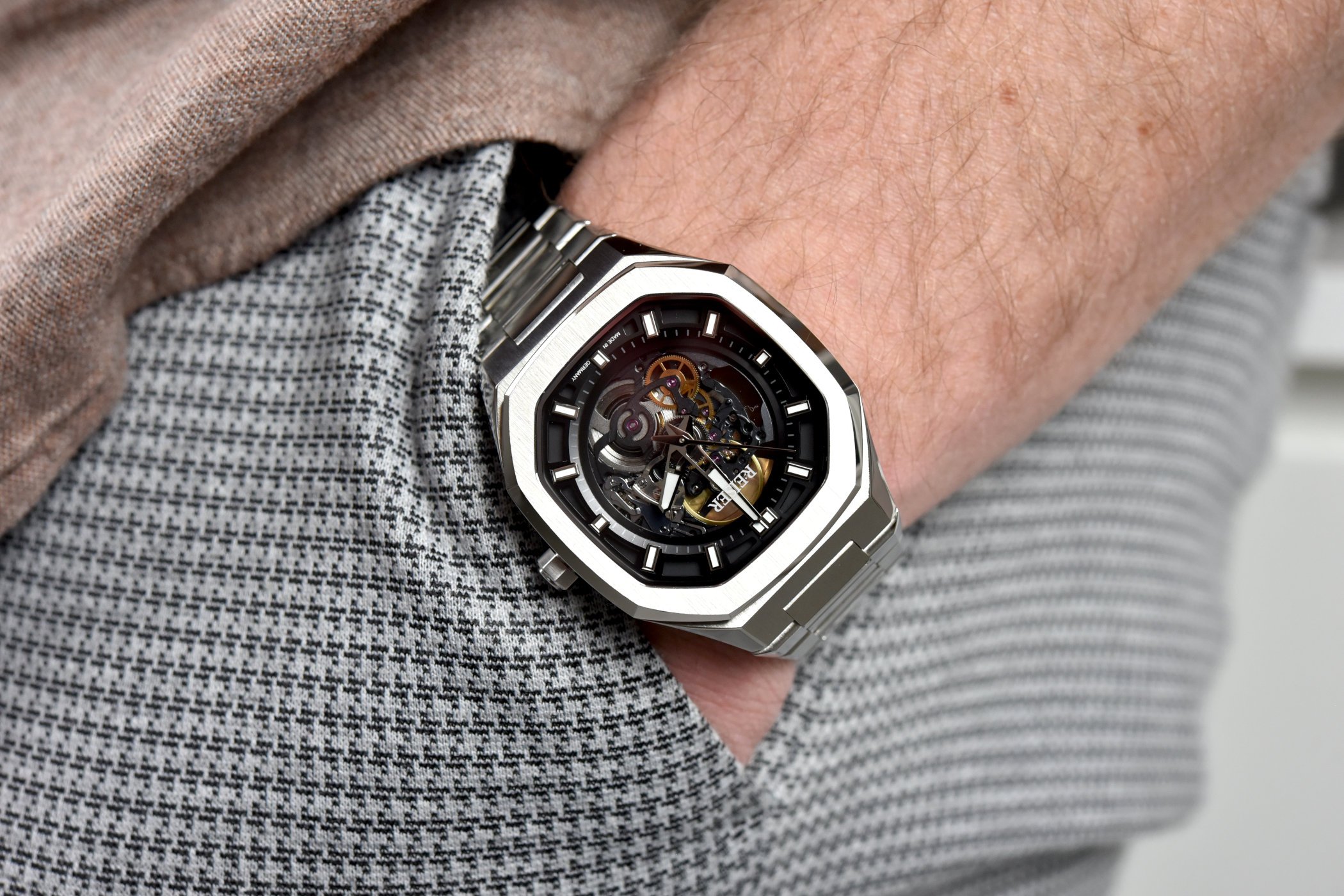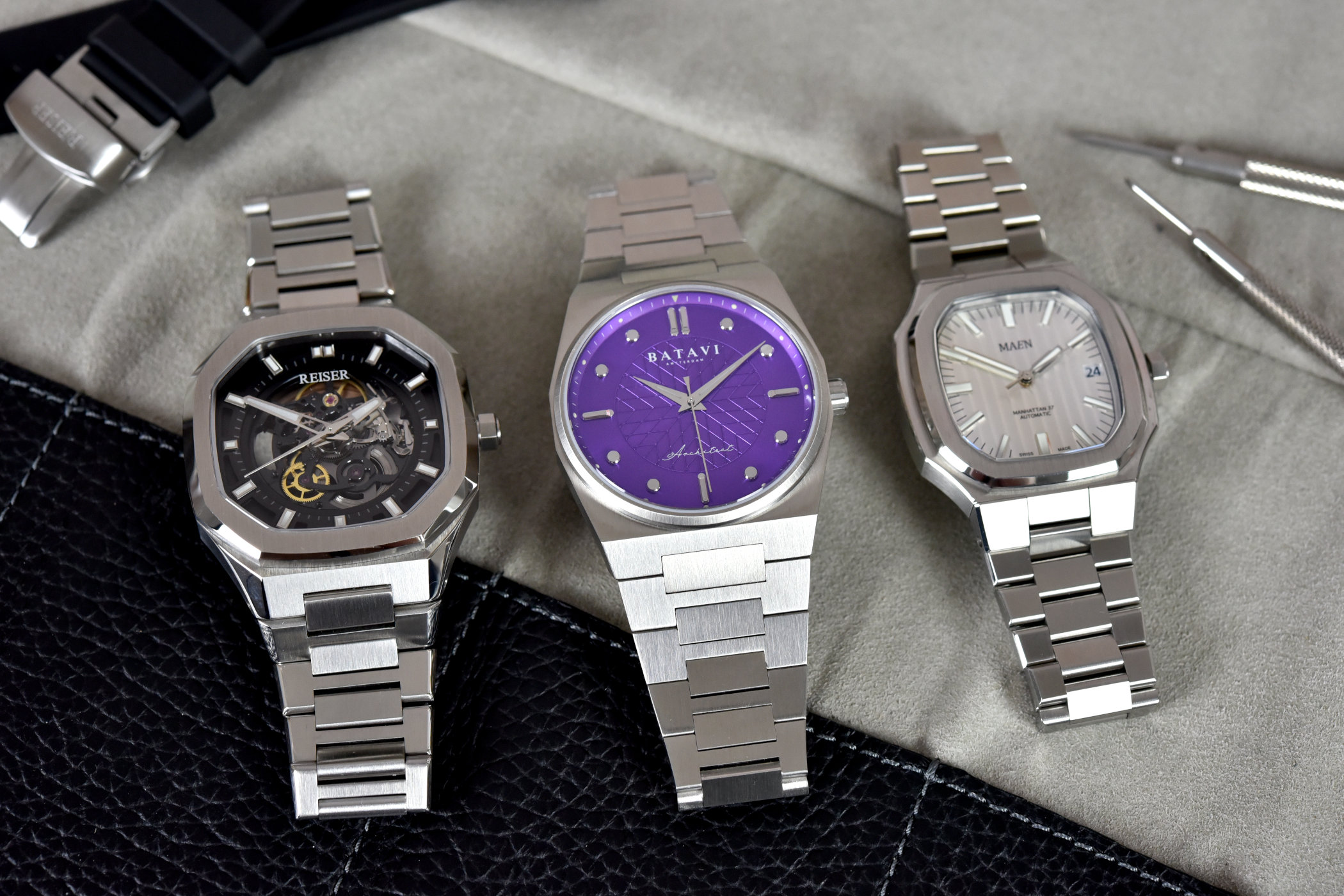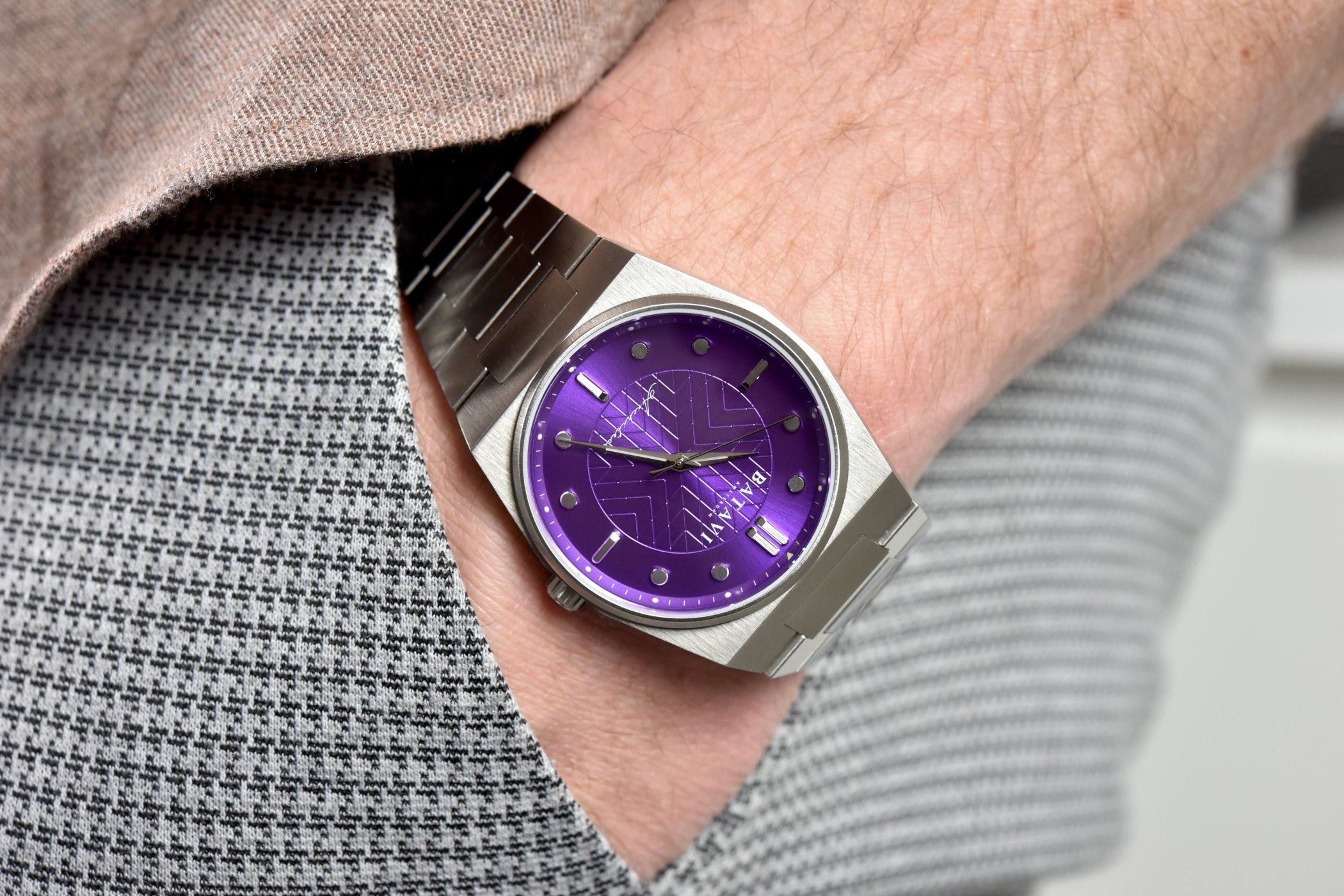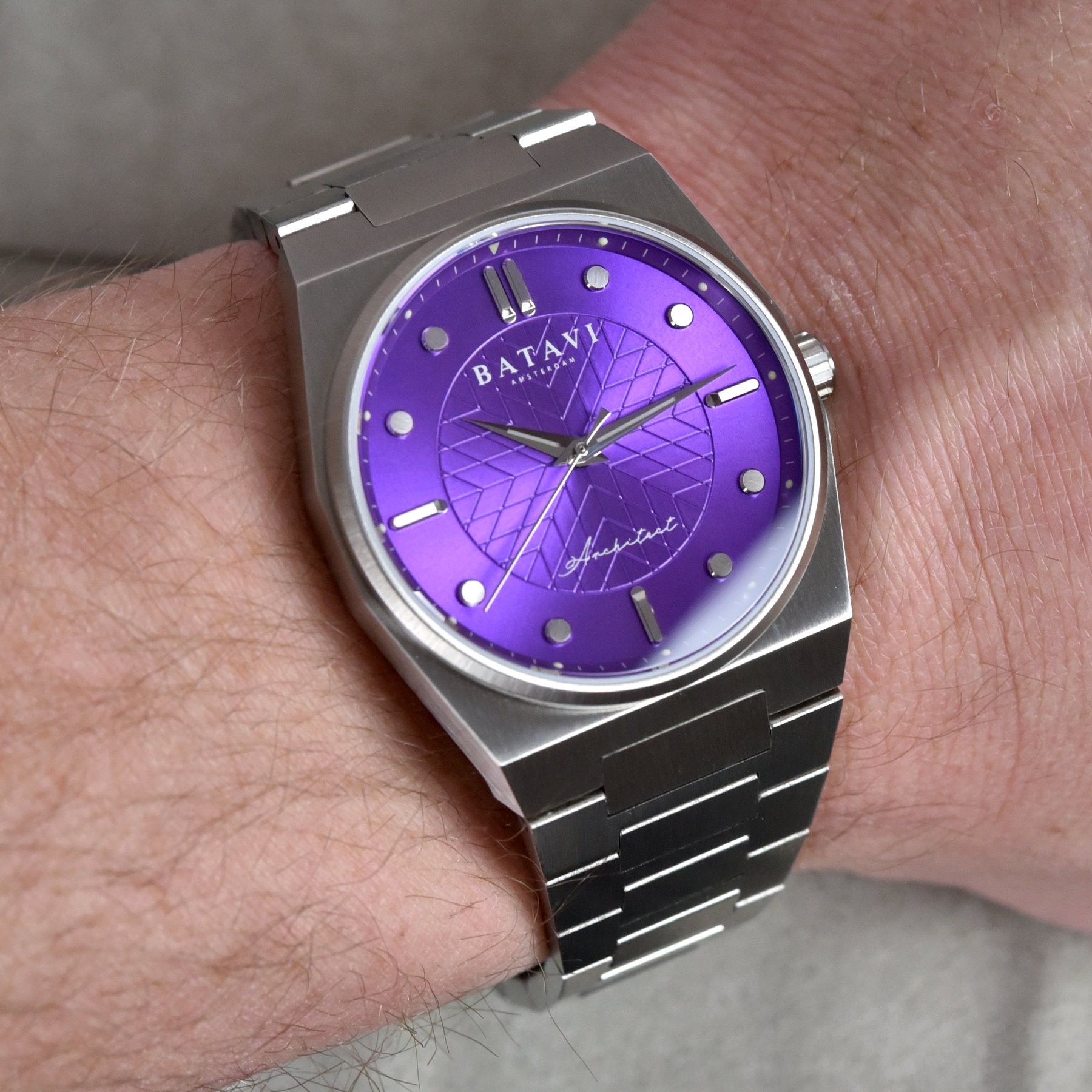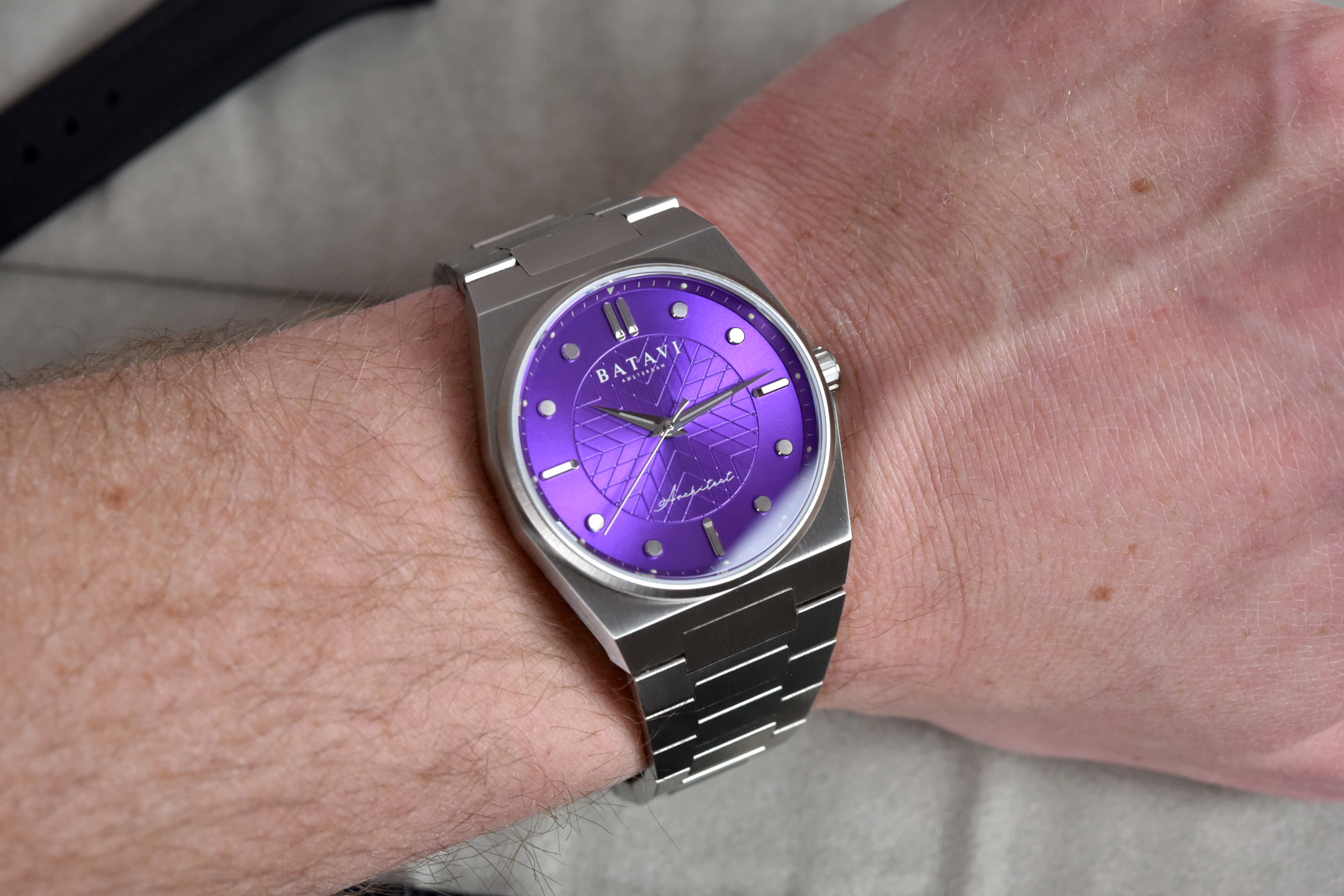Reiser, Maen and Batavi go face-to-face-to-face to show there are still fun and affordable luxury sports watches around.
The luxury sports watch, preferably with an integrated design, has exploded in recent years. Both in contenders and in sales, as more and more brands enter this hotter-than-hot segment of the market. Regular faces and newcomers all want a piece of the action, and this leads to surprising new options to choose from. Today we’re looking at three such watches on the more affordable side of the spectrum. And chauvinistic as we are sometimes, we’ve gone for three brands with Dutch ties to show you there are still plenty of fun watches to be found if you’re willing to look beyond the usual suspects. Here are the new Maen Manhattan 37, the Reiser Alpen Skeleton and the Batavi Architect Tony Purple.
Why so serious?
We’ve said it time and time again: watches, to us, should be fun. They should bring joy to the owner, and an experience to remember for a long time if possible. I’m sure most of us remember the feeling of first seeing a watch, then hunting it down or waiting for it to be available, followed by the actual moment of taking ownership of it and strapping it on for the very first time. It’s an absolutely wonderful sensation. And in today’s day and age, I feel we sometimes take life, and watches, a bit too seriously.
I feel something similar about the luxury sports watch segment. Far too often we see people making daft comparisons between watches, or commenting something is overpriced or simply unavailable. While that may be true for some watches, there’s still plenty of joy to be found when venturing into new territories. Take the Tissot PRX collection for instance, which caused a huge storm last year. Some people feel it’s too much like the Audemars Piguet Royal Oak, ignoring the fact it’s modelled after a Tissot watch from the 1970s. And even back then, the industry was sensitive to trends so a lot of brands followed what was popular back then.
FACE TO FACE TO FACE
Today we are taking a look at the newly released Maen Manhattan 37, the handsome Reiser Alpen Skeleton and the bold Batavi Architect “Tony Purple”. All three are priced between EUR 500 -1,000 roughly, so in essence, are very attainable for most of us. And yes, all three have that signature “shaped case, integrated bracelet” design that’s so immensely popular today. But, and that becomes quite apparent when checking them out side by side, all three are quite different in their own right! Let’s start with the newborn, shall we?
Maen Manhattan 37
Maen is the oldest of the three brands, despite being launched just five years ago. Although it is based in Stockholm, Sweden, Maen Watches is founded by Dutchmen Sebastiaan Cortjaens and Jules van Helvoort. The two men found each other through their shared passion for watches and the idea to start a watch brand. When Sebastiaan reached out to Jules for input on this new idea for a watch he had, the two quickly agreed to team up and launch Maen Watches.
Going through quartz collections at first, funded through Kickstarter, Maen quickly found its audience and started building the brand. Eventually, the two men worked their way into mechanical watchmaking, with the Manhattan 37 being the newest member of the family. By now the entire portfolio has abandoned quartz watches and relies solely on mechanical movements.
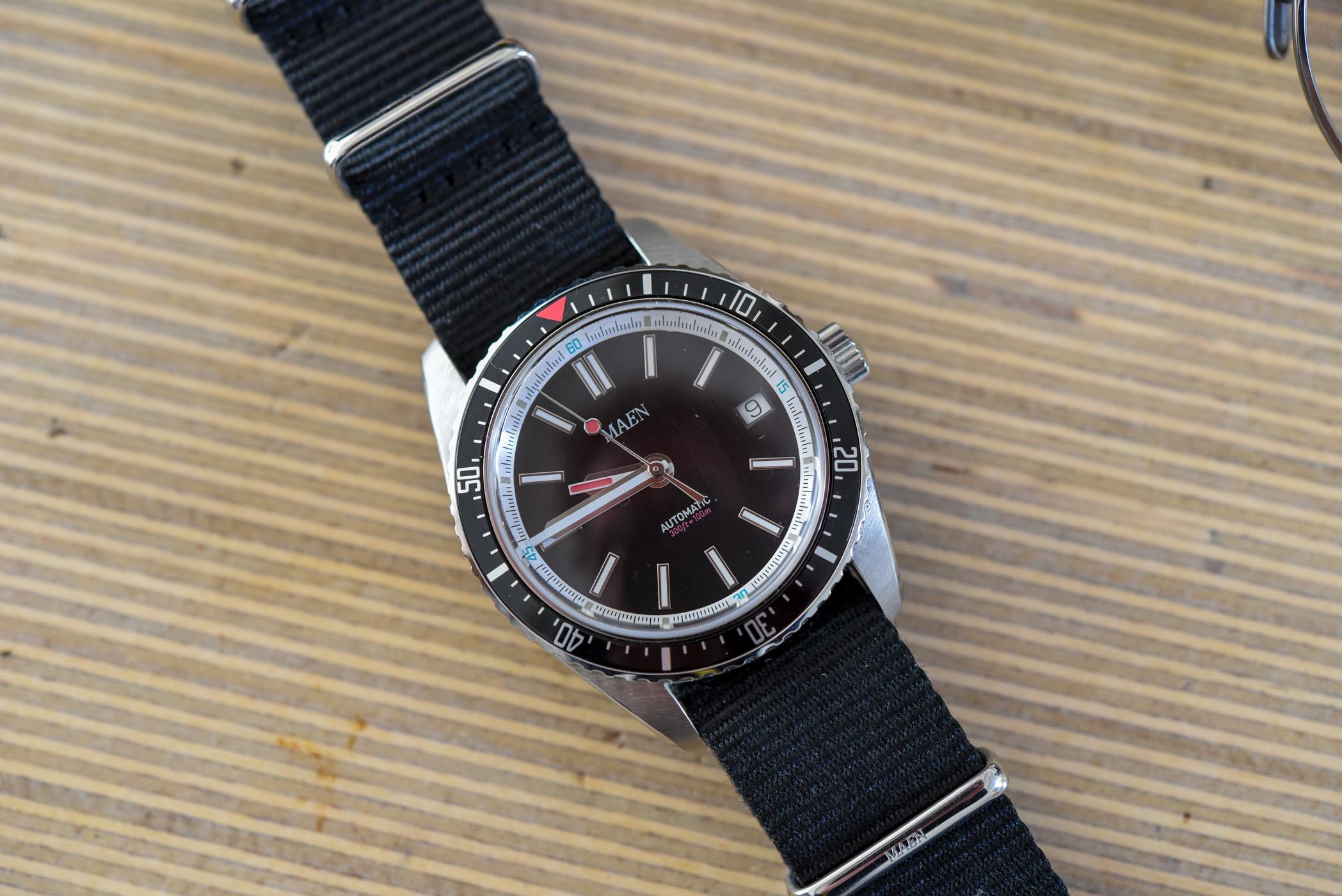
The Manhattan 37 is the smallest out of the three and by far the easiest to wear due to its modest dimensions. The shaped case measures 37mm across with a lug-to-lug of 47mm. The profile is quite appealing, even though the inspirational elements are quite easy to identify. Like many others, the case has a brushed and polished finishing and is topped with a flat, shaped bezel with a brushed top surface and polished bevels.
If we take a look at the dial I think Maen has done something quite smart. Not wanting to tread into the quicksand debate of whether a watch like this should come with a date or not, the Manhattan is available with and without it. If you prefer the clean, undisturbed look go for the No-Date, and if you feel the need to check what date it is from time to time, they’ve got you covered as well.
Speaking of the dial, there are four colours available, all finished with a very good-looking vertical Côtes de Genève pattern. You have a choice between anthracite black, ice grey, midnight blue and copper. Each one comes with applied, faceted hour indices with a strike of Super-LumiNova down the spine. A subtle minute track is spread around the outer perimeter of the dial. The hour and minute hands have a fresh, baton shape and are paired with a simple needle-like seconds hand. Again, Super-LumiNova is applied to boost legibility in darker circumstances.
The Manhattan 37 comes with a Ronda R-150 automatic movement. We‘ve never come across this calibre before, but during our time with the watch, it did its job. Despite misconceptions, the Ronda R-150 is not an ETA 2824 clone. It runs at a frequency of 28,800vph, uses 25 jewels and provides about 40 hours of running time. In terms of accuracy, it’s not exactly high-precision we’re talking about here. It is regulated to an average deviation of +/- 12 seconds per day. I cannot argue about the level of finishing of the movement, as it is hidden by the solid caseback.
The integration of the steel bracelet is very nicely done, and it feels very comfortable on the wrist. The bracelet lacks a quick-release system which would have made the Manhattan 37 an even better proposition than it already is. The Maen Manhattan 37 is priced at EUR 699 for both the date and no-date version, which feels to me like a very good deal for such a nicely executed watch. There are plenty of details to set it apart from the masses, most notably the dial.
For more information, please visit MaenWatches.com
Quick Facts – 37mm x 9.3mm – stainless steel case, brushed and polished – sapphire crystal – closed caseback – octagonal crown – 50m water-resistant – midnight blue, anthracite black, ice grey or copper dial – vertical Côtes de Genève decoration – faceted, applied numerals – baton hands – Super-LumiNova elements – date or no-date configuration – Ronda R-150, automatic – 28,800vph – 25 jewels – 40h power reserve – central hours, minutes, seconds, (optional) date – integrated steel three-link bracelet with folding clasp – available for pre-order at EUR 699
Reiser Alpen Skeleton
The Reiser Alpen Skeleton is the priciest of today’s trio, but at around the 1,000 euro mark, it is still attainable to the vast majority of the people. But we’re not going into pricing just yet, as there are plenty of other things to talk about. The Reiser Alpen Skeleton is essentially an open-worked version of the Alpen Date, with different mechanics.
The case measures 41mm by 11.45mm and is made in 316L stainless steel. In terms of dimensions, it is the biggest of the three but it still remains very wearable. The case has a very nice profile to it, with subtle touches like the contours of the bezel making it punch above its weight. The finishing, a mix of brushed and polished surfaces, is very nicely done. The integrated lug design is angled as such to not make it too large. A sapphire crystal on both sides covers the dial and movement.
Yet in terms of the dial, there’s only the bare minimum as the Alpen Skeleton features an open-worked movement and dial design. The black outer flange is finished with large, applied hour markers with a luminous insert and a white minute track on the sloped inner edge. The logo is printed on the inside of the crystal, which is a nice touch. The hands are partially open-worked as well and have a good dose of Super-LumiNova as well. The contrasting colours of the dial, hands and movement work together nicely and keep it very legible.
The movement Reiser chose for the Alpen Skeleton is an STP 6-15, which is an ETA 2824-2 clone. This automatic movement runs at a rate of 28,800vph and uses 26 jewels. The power reserve is 44 hours, so on the same level as the other two. Several movement components are finished in black PVD, and there’s a rose gold-plated rotor with Côtes de Genève on top.
Like the others, the Reiser Alpen Skeleton also comes on an integrated steel bracelet. It’s also available on a black rubber strap that follows the profile of the case perfectly. Presented as a limited run of 75 pieces of each, the bracelet version is sold out but the one with the rubber strap is still available at a price of EUR 949.
For more information, please visit ReiserWatches.com
Quick Facts – 41mm x 11.45mm – stainless steel case, brushed and polished – steel bezel and crown – sapphire crystal front and back – 50m water-resistance – skeletonized dial – black flange with applied faceted indices and white minute track – open-worked and luminous central hour and minute hands – central seconds hand – STP 6-15, automatic – black PVD coated – skeletonized plates and bridges – 28,800vph – 26 jewels – 44h power reserve – rose gold-plated rotor – stainless steel bracelet or black rubber strap – limited edition of 75 pieces each – EUR 949
Batavi Architect “Tony Purple”
Batavi Watches isn’t new to us, as we’ve featured it a couple of times before. It’s owned and run by Ugur Mamak, a young Dutchman with a passion for watches and an interest in fresh and bold colours. The inaugural collection, the Kosmopoliet GMT was very well-received and has been long sold out. Last year, Batavi introduced the Architect collection, which again offers something fresh for those not looking to settle for something mainstream. Launching soon is the Geograaf GMT & Worldtimer collection.
The Batavi Architect comes in a brushed and polished stainless steel case and bracelet. In terms of design, it might be closest to the Tissot PRX if we were to make any sort of comparison. But given the fact the specific codes for a luxury sports watch ultimately lead to this type of design, there’s no shame in that. And besides, Batavi launched it just prior to the release of the PRX so to say the design is directly copied would be somewhat of a misjudgment.
Housed in a 39mm by 10.6mm stainless steel case, the Batavi Architect is an angular, robust-looking piece. It all feels very sturdy, especially considering the price this watch retails for (more later). You get a double-domed sapphire crystal on top, a mostly brushed finish, and an integrated bracelet construction. Nothing to complain about here!
The “Tony Purple” dial of the Batavi Architect is certainly the most outspoken one of the three watches featured here. If the colour is not so much your thing, there have been alternative dial options as well, including a wood one. The dials for the Architect typically feature a distinct pattern in the centre section, linking the watch to architecture, hence the name. Applied indices and Dauphine styled hands complete the dial.
Power comes from the Miyota 9039 automatic movement, a no-date version of the Miyota 9015. This calibre can be seen through the open caseback, runs at a frequency of 28,800vph and provides 44 hours of running time when fully wound. Although quite industrial in looks, the movement performs as it should.
Out of the three, the Batavi Architect Tony Purple is the most affordable. For just EUR 419 you get a mechanical sports watch with an integrated steel bracelet. Quick-release levers built into the end-links allow you to easily change to leather straps, using the supplied adapter links. Although the current batch is sold out, new batches of the Tony Purple and other variants are on their way and can be pre-ordered now.
For more information, please visit Batavi-Watches.com
Quick Facts – 39mm x 10.6mm – stainless steel case, brushed and polished – double-domed sapphire crystal – exhibition caseback – 100m water-resistance – Tony Purple dial with decorative motif – applied steel indices – minute track with Super-LumiNova – steel hour and minute hands with Super-LumiNova – central seconds hand – Miyota 9039, automatic – 24 jewels – 28,800vph – 44h power reserve – central hours, minutes, seconds – integrated steel bracelet with quick-release levers – adapter links supplied to change to leather straps – EUR 419
In Conclusion
All in all these three watches represent the alternative route with regard to affordable luxury sports watches. It goes to show there’s still fun to be found in this segment, outside the beaten path of the mainstream industry. All three perform well on the wrist and offer something different in this heavily contested segment. Priced between EUR 400 and 1,000, the value-for-money box is certainly more than ticked, and there’s even a good level of versatility as both the Reiser and Batavi offer alternative strap solutions.
And yes, discovering the Dutch ties between these three brands speaks to us all the more, obviously. But don’t let that be of any influence, the three watches seen here can hold their own without that element of Dutch pride we feel. The Maen Manhattan 37, Reiser Alpen Skeleton and Batavi Architect Tony Purple are just honest, all-around watches to enjoy and wear wherever and whenever you feel like it. Like watches should be experienced in the first place.

